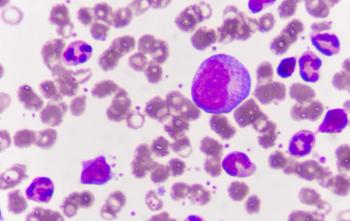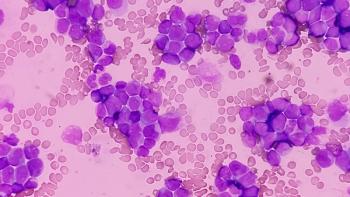
Navigators Prove Crucial in Improving Genomic Testing Rates Among Black Patients With Prostate Cancer
Clinical navigators helped increase the rate of genomic testing referrals among Black patients with prostate cancer—a group that faces significant health disparities in the care system.
The percentage of Black patients with prostate cancer who were referred to genomic testing greatly increased following the introduction of a precision medicine navigator, according to a presentation from the 2023 American Society for Radiation Oncology (ASTRO) Annual Meeting.
The job for one of these clinical navigators is to focus exclusively on identifying candidates for genomic testing and ensuring that the tests are completed. After identifying patients who would benefit from testing, these navigators help the patients fill out requisition forms and coordinate the submission of biopsied tissue to the testing company.
Investigators are optimistic that precision medicine navigators can help this patient population better predict high-risk disease and increase their likelihood of receiving appropriate treatment.
“Our findings suggest hiring a precision medicine navigator who specializes in genetic testing can improve the rates of Black patients receiving these tests, which could potentially reduce health disparities and improve outcomes,” Alexander J. Allen, MD, a radiation oncology resident physician at the University of Maryland Medical Center in Baltimore, stated in a press release, noting that for many patients, treatment was adjusted to consider the findings of the genomic tests.
“The most common way treatments were altered based on genomic testing results was in whether or not patients with intermediate risk disease were given hormone blocking therapy,” he recalled.
Key Findings
Investigators compared the rates of testing from 7 months prior and 7 months following the introduction of a precision medicine navigator. Prior to the navigator’s arrival, the referral rate of Black patients for genomic testing was 19%. Following the navigator’s arrival, this number rose to 58%, meaning that Black patients were 6 times more likely to undergo testing with the presence of a navigator.
Of note, substantial increases in referral were observed for lower-income patients (19% to 58%), those on Medicare and Medicaid (20% to 64%), and those being treated in the community setting (6% to 77%), following the navigator’s arrival.
The study included a total of 693 patients, 44.9% of whom (n = 311) received treatment prior to the navigator arrival and 55.1% (n = 382) of whom were treated in a postnavigator setting. The median patient age was 68 years in both groups, and the breakdown of races was similar between the 2 groups as well, with 60% White, 34% Black, 3.2%/3.7% Asian/Pacific Islander patients, and 2.1% Hispanic patients.
Significance
Despite being 76% more likely than White patients to be diagnosed with prostate cancer, Black patients with prostate cancer face significant disadvantages within the health care system. Many factors lead to the racial disparity—including a lower screening rate; Black patients with prostate cancer are more likely to receive a diagnosis once their cancer has already become aggressive. Consequently, they are 120% more likely than White patients to die from their prostate cancer.
Clinicians leverage genomic testing to assess the likelihood that an individual’s cancer will metastasize, often using a test known as Decipher, which assesses RNA markers in samples of the patient’s tumor tissue. At the 2021 ASTRO Meeting, research presented suggested that genomic tests may be better predictors of high-risk disease than the conventional method of assessing Gleason score and prostate-specific antigen levels. However, Allen said that oncologists today use all 3 tests to guide treatment decisions.
“Genomic testing provides additional information that can alter a patient’s treatment plan,” he said. “For example, if Gleason scores and PSA levels suggest a patient has an intermediate risk for metastases, but the genetic analysis categorizes them at high risk because of the biological makeup of the tumor, then you might intensify treatment.”
Allen’s team is currently working on a study which will assess whether the increased rate of genomic testing results in better treatment outcomes—operating on the assumption that better risk stratification will lead to better treatment results.
The Caveat
Because traditional business models do not financially support precision medicine navigators, novel funding mechanisms may be necessary to increase their availability and decreased disparities.
Moreover, ensuring that these services are available to all patients who might benefit will remain a crucial part of lessening disparities in prostate cancer moving forward.
“As precision medicine becomes more mainstream, it has the potential to alleviate disparities,” Allen concluded. “But if there are no measures taken to ensure access to these tools, we could just be maintaining or even worsening the health inequities that we have today.”
References
- Precision medicine navigators increase genomic testing rates for Black patients with prostate cancer.News release. ASTRO. October 1, 2023. Accessed October 10, 2023.
https://www.astro.org/News-and-Publications/News-and-Media-Center/News-Releases/2023/Precision-medicine-navigators-increase-genomic-tes - Allen AJ, Savla B, Datnow-Martinez C, et al. The impact of a precision medicine navigator on inequities associated with utilization of genomic tests in Black men with prostate cancer. Presented at: 2023 American Society for Radiation Oncology Annual Meeting (ASTRO); September 30 to October 4, 2023; San Diego, CA. Abstract 122.
Newsletter
Knowledge is power. Don’t miss the most recent breakthroughs in cancer care.
















































































